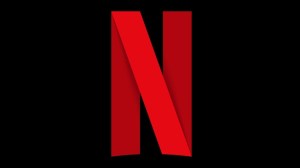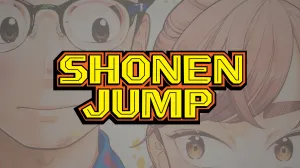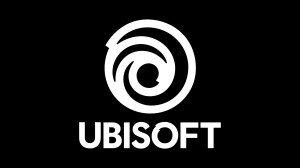This month, Wizards of the Coast launched its latest Magic: The Gathering set, Ikoria: Lair of Behemoths. At the same time, Magic: The Gathering Arena gave its booster draft setup an overhaul, introducing player draft along with the new set. Between the new set and the introduction of the premier draft format, now’s a great time to dig into Magic: The Gathering‘s booster draft scene via MTG Arena. When you go into a booster draft, it’s helpful to have an idea about what the format’s archetypes are. Those archetypes are deck strategies that are designed to work well given the cards and synergy available to them within the set.
Videos by ComicBook.com
We’re here to break down those archetypes in Ikoria. Ikoria is a wedge set, meaning it’s focusing on enemy color pairings. Those archetypes have the most support and are mostly focused on Ikoria’s unique mechanics, so we’ll focus on them first. Ally color pairings can still work and are focused on building around longstanding mechanics. They’re less supported though, so it may be better to splash another color into the mix. We’ll cover those next.
Lastly, we’ll talk about some of the companion cards in the set. Companion cards can offer powerful abilities and the advantage of having a virtual eighth card in your starting hand, but only if you build around their restrictions, some of which are tougher than others. Keep reading to see what we have to say about them.
Orzhov Humans

Key Cards: Dire Tactics, Bastion of Remembrance, Sanctuary Lockdown
The “white weenie” style deck of the Ikoria draft scene. Human tribal wins by being fast, putting out a lot of creatures, and — if you can grab Bastion of Remembrance — making your opponent pay for removing those creatures.
Adding in green offers access to some other human cards, just be careful not to draft too many of green’s mutate monsters. Mutate doesn’t work with humans, so you won’t be getting the most value out of those cards.
Boros Cycling

Key Cards: Flourishing Fox, Savai Thundermane, Valiant Rescuer, basically any card with cycling.
Another aggressive, low-to-the-ground style deck, but trickier to play. The idea with Boros cycling is to play cheap cards with good abilities that trigger of cycling early on. Flourishing Fox is the ideal turn one play, while Savai Thundermane is potentially limitless removal and life gain and Valiant Rescuer lets you go wide.
The trick to this deck is knowing when to cycle a card and when to play it. It can be tempting to cycle almost everything in an early rush and then find yourself with nothing to survive a game that’s got longer than expected. Be discerning.
If you’re looking to splash colors, blue has the most additional cycle cards to offer. Black will help you go wide.
Simic Mutate

Key Cards: Pollywog Symbiote, Essence Symbiote, Trumpeting Gnarr
Mutate is the new mechanic introduced in Ikoria, so naturally, it’s a pillar of the draft meta. While it’s represented across all five colors, blue and green give you the best synergy.
Like cycling, playing mutate will test your skill, Almost every creature represents a decision point: do you mutate something you already have on the board or play it alone to get an additional body. Consider whether you think your opponent is packing removal because it’s very easy to get two-for-oned by mutating a creature.
On the upside, mutate also basically has built-in haste. Your opponent may not want to waste his sorcery-speed removal spell on the 1/1 Wayfinder you used to fetch a land. But that means you can mutate your Auspicious Starrix on top of it, creating a 6/6 creature with vigilance that can attack this turn, not to mention whatever Starrix’s triggered ability happens to dig up.
It’s very easy to turn this into a wedge deck. Illuna, Apex of Wishes and Brokkos, Apex of Forever are both bombs that you should clearly take from any pack you open, and then splash red or black respectively. Both colors have great mutate creatures, but black also offers removal if you’re lucky enough to pull Dirge Bat.
Golgari Graveyard

Key Cards: Call of the Death-Dweller, Boneyard Lurker, Back for More
Black and green together are going to do what they do best in any other set, which is manipulating the graveyard to put big creatures on the board. Ikoria offers plenty of tools to do that, including cards like Call of the Death-Dweller, Back for More, and Unbreakable bond. Graveyard Lurker offers the same via its mutate ability, so if you pull one you should keep an eye out for other mutating creatures to maximize value.
Cycling is a kind of secondary theme of this set. There’s no better way to prime your graveyard with threats than by cycling a big creature like Great Sandwurm to draw a card early on, then resurrect it out of nowhere later in the game. Red also has big, scary, cycling creatures, so it isn’t a bad choice for a splash color.
Izzet Spells

Key Cards: Sprite Dragon, Lore Drakkis, removal spells, and card draw.
Spell synergy in a blue-red deck is another tried and true strategy supported by Ikoria’s draft strategy. You’ll want to keep an eye out for creatures that get boosts or trigger off of non-creature spells, including Sprite Dragon, Lore Drakkis, Pyroceratops, or even Blisterspit gremlin.
Make sure you pack your deck with spells worth casting. Premium removal like Fire Prophecy are even more premium in this archetype, and card drawing spells like Of One Mind can keep your hand loaded with potential threats.
Azorious Flyers

Key cards: Wingspan Mentor, Jubilant Skybonder, Skycat Sovereign
Evasive creatures are always critical in limited play. Why not build a deck around them? If you open Skycat Sovereign in pack one, Azorious flyers is the deck you should be looking to build.
Keep and eye out for Wingspan Mentor and Jubilant Skybonder, which make your flyers more powerful and more difficult to deal with. Gust of Wind can help slow your opponent’s tempo for cheap thanks to its flying synergy. And take advantage of white’s suite of removal cards like Divine Arrow, Pacifism, Swallow Whole, and Blade Banish — not to mention Capture Spher in blue — to keep the skyways clear.
Gruul Stompy

Key cards: Hornbash Mentor, Proud Wildbonder, Quartzwood Crasher
Go full stompy by leaning into the red-green trample theme. It’s pretty simple: play big creatures with trample (or deceptively small creatures like Almighty Brushwagg), make them bigger, give some other creatures trample too, then attack.
Proud Wildbonder is a key card here as it allows you to assign your damage as if your creatures weren’t blocked. Hornbash Mentor can help you go taller if you need a little more power to finish an opponent off.
Rakdos Menace

Key Cards: Frillscale Mentor, Sonorous Howlbonder, Labyrinth Raptor
Menace is the key to building a solid Rakdos deck in Ikoria. Sonorous Howlbonder and Labyrinth Mentor make your menace more powerful and even more difficult to deal with.
Look for cards that can deal out deathtouch counters, such as Call of the Death-Dweller, or first strike counters, such as Sanctuary Smasher, since both combo nicely with menace. Also, Blood Curdle is fantastic removal that plays right into the larger theme of this deck.
Selesnya Vigilance

Key Cards: Alert Heedbonder, Kaheera the Orphanguard, Keensight Mentor
Support for this archetype is a little anemic, but having played against it a few types, I can tell you from experience that it can be done. Vigilance is a more defensive ability, so you’ll rely a lot more on your mentor than the other allied archetypes to make your creatures scary. Kaheera works as a mentor even though it doesn’t specifically target vigilance creatures because many of the creatures with vigilance in the set have vigilance.
If you’re not wanting to try to force a dual-color deck, consider making vigilance a subtheme of your deck. It’s almost purely additive to decks based on the humans and mutate archetypes.
Dimir Flash

Key cards: Slitherwisp, Cunning Nightbonder, Sea-Dasher Octopus, Pouncing Shoreshark
Flash support in Ikoria is, arguable, even harder to come by then Selesnya, making it even more of a theme that’s primed for wedge decks. If you’re going the straight flash route, Sea-Dasher Octopus can be crucial to keeping your hand full, especially if you can mutate it into something with flying or another form of evasion.
Consider going with a U/B/G build, especially if you pull Pouncing Shoreshark. It has both flash and mutate, making it a perfect bridge between the flash and mutate archetypes.
Companions

Companion cards have proven powerful enough that each is almost an archetype in and of itself. If you pull a companion, you should at least consider building around. But some are easier to make work than others, and some are more rewarding. Here are some thoughts on them.
Lurrus of the Dream-Den: Lurrus is making a big splash in constructed, but I find him to be a high-risk, and low reward in limited. You’ll need to pack your deck with cheap filler to make him work, but any opponent who knows what they’re doing will hold back a removal spell to eliminate him before you’re able to turn him into the value machine he’s supposed to be. Yes, you can bring him back with certain Ikoria spells, but then you’re focusing on resurrecting your pet and not winning the game. It can be done, but it is easy to build poorly to support Lurrus. Definitely consider a wedge deck to make sure you have enough good cheap permanents that your deck isn’t entirely reliant on Lurrus.
Keruga, the Macrosage: Absolute play Keruga as a companion if you pull him. He’s easy to build around and Ikoria limited is generally slow enough that lacking one and two drops won’t be a huge deficiency in your deck. It’s nice that Keruga is a 5/4 creature but what makes him stand out is that, unlike Lurrus, you already get the full benefit of his hand-restocking ability even if your opponent immediately casts Blood Curdle on him.
Kaheera, the Orphanguard: If you like tribal decks, Kaheera is not hard to build around in Ikoria.
Obosh, the Preypiercer: This one may be better in your deck than as a companion for the same reason as Lurrus, that being that he’s very likely to be removed before you can get much use out of him. Pulling him out as a surprise after your opponent has spent his removal is much more fun. Then again, a guaranteed finisher at your side may cause your opponent to hold onto his removal for too long, giving you an opening to finish him off without Obosh.
Lutri, the Spellchaser: If you’re drafting Izzet Spells anyway, you might as well try to make this work. Don’t bend over backward for him though. After all, you only get to copy one spell.
Gyruda, Doom of the Depths: Packing our deck with just even costed cards can be trigger, but the payoff is massive. Worth trying it if you open him early enough.








